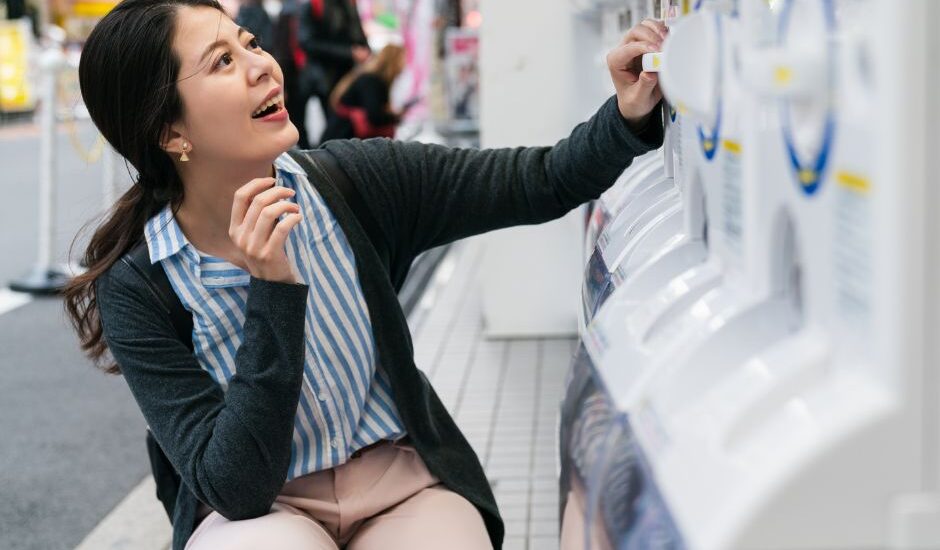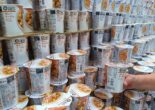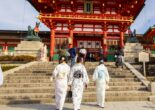From young children and high school students to grown men eagerly turning a knob while their partner waits in excitement beside them, Japan’s love for toy capsules is definitely a cultural trait that makes it even more uniquely fascinating.

Gachapon or gashapon are coin-operated toy vending machines that require around ¥100 to ¥500 before spitting out one item from a collection of the same theme or brand. Unlike toy capsules in other countries, gachapon in Japan are known to drop high-quality, trademarked, and limited-edition items featuring characters or symbols from anime, video games, idols, manga, trinkets, or niche interests.
Needless to say, there’s bound to be a gachapon that pique’s everyone’s curiosity, hence its success in getting the public to open their wallets and take out a coin…or five. The idea of gachapon is all about offering something cute or rare, whether it’s miniature figurines of the latest (or classic) anime characters or an amazingly detailed bag of Royal Bread that you can’t find elsewhere and must have.

The history of gachapon
It all started in the 1960s when Ryuzo Shigeta, now called the Gacha-Gacha Ojiisan, “Gachapon Grandfather,” set up the first toy capsule machine in Japan. He filled the plastic balls with toys and offered them to the public for a small prize.
So big did the concept of gachapon become that it has designated spaces in many department stores, and even big brands like Bandai Co, which licensed the name “Gashapon,” established stores just for the toy capsules. Head to Ikebukuro’s Sunshine City shopping center and look for “Department Store of Gashapon,” featuring 3,000 capsule machines, including the most expensive Demon Slayer figurines which cost Demon Slayer figurines which cost ¥800 a piece.
Today, there are over 360,000 gachapon machines in Japan, with new collectibles released every month. Thanks to the novelty aspect of gachapons, the public can keep coming back for more, and the business becomes sustainable.
As of the fiscal year 2022, the gachapon industry in Japan amounted to ¥45 billion and has steadily increased through the years, from ¥29.7 billion in 2016 to its value today.
Now, you might wonder if gachapons are mainly a marketing stint like the claw or UFO machines wherein you are psychologically forced to keep going because you have already lost a good amount of money. Then you find the same anime figurine or plushie being sold at second-hand or game stores for a quarter of the price.
It’s different with gachapons, although you are relying on chance to get the item you prefer. With gachapon toys, it’s quite hard to find the opened capsules being sold elsewhere. Many of these are trademarked or licensed items only available on the capsules. Because of how cute or limited edition they are, the items don’t usually make it back to the market as secondhand items but are treated much like collectibles.

Where to find the biggest gachapon sites
Although there are gachapon spots scattered all over Japan, you might want to visit some of the biggest hubs for more unique toys. Tokyo Station houses the Tokyo Gashapon Street, with over 50 unique capsule machines ranging from anime and manga characters to stationary, furniture, and other random toys.
Another must-visit gachapon spot if you’re an anime or manga fan is Akihabara. Since the area is already a haven for all things anime, you can expect a vast gachapon selection at many stores, such as Akihabara Gachapon Kaikan, with 500 capsule machines.

Buy gachapon responsibly
In terms of being environmentally friendly, many would conclude that gachapons create an unnecessary amount of waste since the toys are made of plastic. What’s more, they come in plastic balls, and the toys themselves are wrapped in plastic. Unless you are collecting the casings, it’s recommended to throw them away correctly with the scheduled trash collection of plastics “pura” or at the designated baskets on top of the capsule machines.
Fortunately, gachapon manufacturers are doing their part in addressing the issue and have been recycling the plastic casings. Others, like Bandai Co, are even reusing the collected plastic balls into new shells. Meanwhile, TOMY group, another gachapon maker, is looking at making the plastic shells smaller to lessen their carbon footprint.
You might still be dubious about the whole idea of these toy capsules, but the best way to experience this unique cultural trait of Japan is to browse these gachapons personally. Chances are, you’ll find something you’re interested in. Enjoy the gacha gacha activity!
Related Articles
Warning: Undefined array key "sfsi_threadsIcon_order" in /home/veremosglobal/tokyoroomfinder.com/public_html/blog/wp-content/plugins/ultimate-social-media-icons/libs/controllers/sfsi_frontpopUp.php on line 165
Warning: Undefined array key "sfsi_blueskyIcon_order" in /home/veremosglobal/tokyoroomfinder.com/public_html/blog/wp-content/plugins/ultimate-social-media-icons/libs/controllers/sfsi_frontpopUp.php on line 170
Warning: Undefined array key "sfsi_bluesky_display" in /home/veremosglobal/tokyoroomfinder.com/public_html/blog/wp-content/plugins/ultimate-social-media-icons/libs/controllers/sfsi_frontpopUp.php on line 266



